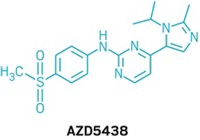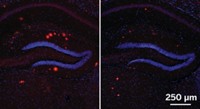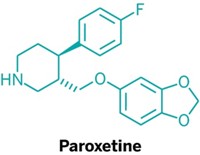Advertisement
Grab your lab coat. Let's get started
Welcome!
Welcome!
Create an account below to get 6 C&EN articles per month, receive newsletters and more - all free.
It seems this is your first time logging in online. Please enter the following information to continue.
As an ACS member you automatically get access to this site. All we need is few more details to create your reading experience.
Not you? Sign in with a different account.
Not you? Sign in with a different account.
ERROR 1
ERROR 1
ERROR 2
ERROR 2
ERROR 2
ERROR 2
ERROR 2
Password and Confirm password must match.
If you have an ACS member number, please enter it here so we can link this account to your membership. (optional)
ERROR 2
ACS values your privacy. By submitting your information, you are gaining access to C&EN and subscribing to our weekly newsletter. We use the information you provide to make your reading experience better, and we will never sell your data to third party members.
Pharmaceuticals
Protein Regulates Sunburn Pain
drug target: Chemokine CXCL5 boosts skin’s tenderness
by Lauren K. Wolf
July 11, 2011
| A version of this story appeared in
Volume 89, Issue 28

t he cell-signaling protein called CXCL5 plays a major role in the agony sunburn victims experience even from just a light slap on the back, according to a report in Science Translational Medicine (DOI: 10.1126/scitranslmed.3002193). A team led by Stephen B. McMahon of King’s College London found that sun-scorched human and rat skin produces CXCL5 at elevated levels and that the molecule increases sensitivity to pain in the tissue.
CXCL5 belongs to a family of proteins, known as chemokines, that can call inflammatory immune cells to an injured site. “This finding might be indicative of a more general role for CXCL5 in a variety of clinically relevant inflammatory pain conditions, for instance, osteoarthritis,” McMahon says. He and his team hope that their results will yield new, targeted pain medications.
In their study, the researchers biopsied the skin of humans and rats that had been exposed to ultraviolet B (UVB) radiation. They then studied the gene expression levels of more than 90 signaling proteins in the tissue. CXCL5 stood out from the pack, suggesting that it is responsible for a majority of sunburn-induced pain in both species.
McMahon’s team also administered an antibody against CXCL5 to rats that had been irradiated with UVB light. Compared with a control group, those rats had a much higher tolerance for pain in their sunburnt tissue.
But what is “unique” about this work, says Ru-Rong Ji, a pain researcher at Harvard Medical School, is that McMahon’s team initially isolated the chemokine from both human and rat tissues.
Traditionally, drug development programs start by identifying targets in animals and eventually moving to humans in the clinic, McMahon says. But humans and animals don’t always react to stimuli in the same way. “Our study has tried to validate an alternative approach,” he adds. “We have reversed the normal process” by starting with human biopsy to identify potential target molecules and then measuring their action in animals. “We think this might be a way of improving the drug discovery process,” McMahon says.





Join the conversation
Contact the reporter
Submit a Letter to the Editor for publication
Engage with us on Twitter